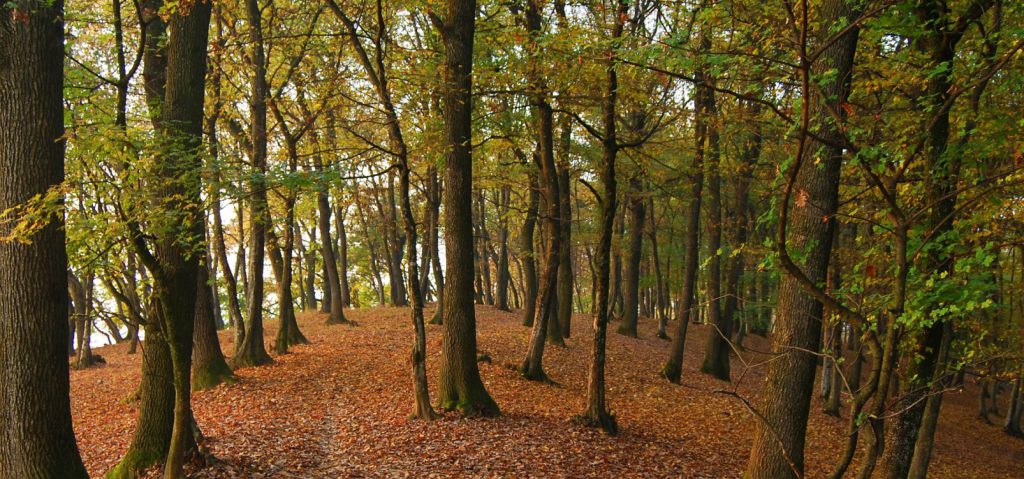Forest Area and Forest Inventory: Adding Greenwood to the Mix

In the EU earlier this year, policymakers from the Commission, the European Parliament, and the Council laid out an ambitious political agreement, defining a renewable energy target EU-wide of 32% by 2030. The agreement also described sustainability criteria for bioenergy, explaining that biomass could be considered renewable (i.e. with stack emissions counted as zero) if that biomass is delivered from a supply base where carbon stocks are stable or increasing.1 In other words, based on input from key stakeholders, including scientists, environmentalists, academics, and industry groups, the EU’s policymakers and regulators concluded that the trend in forest inventory (which is linked directly to carbon stocks) across the forest sourcing area is the operative variable determining the lifecycle GHG emissions benefit associated with wood pellets. The bottom line is this: if regional forest inventory is stable or increasing, then EU policy finds that the GHG emissions from wood pellets are counted as zero at the stack.2
Forest inventory has increased steadily South-wide for decades3, so this decision by EU policymakers ensures that bioenergy from the SE US will continue to help the EU meet its aggressive renewable energy targets. Between 1953 and 2015 the amount of inventory stored in Southern forests more than doubled, and forests in this region continue to be carbon sequestration powerhouses, adding more carbon every year than they had the year before, even after accounting for all of the forest products that the region produces every year. That’s because a healthy forest products market encourages landowners to invest in forests and in sound forest management.
Because we know that inventory is what determines the GHG benefits of using wood pellets, we will focus more and more on that variable going forward. But this doesn’t mean forest area isn’t important – it is.
Forests in the SE US are under threat from urban development and population growth, especially in rapidly-growing regions like the urban corridor between Charlotte and Atlanta (Figure 1). Experts agree that investment in forest products serves to keep forests as forests4, so when the forest products industry does not provide adequate compensation for forest owners, the likelihood of conversion increases. What’s just as important as that the inverse holds too: when robust markets for forest products are there, conversion to forests happens. We’ve seen this effect in our sourcing regions: increases in the amount of forest land are occurring in the regions where we operate, and these changes can often be traced back to the moment when our mill enters the region, providing an important market for low-grade wood. Given the threats to forest land posed by urbanization and population growth5, it will be interesting to see if this trend continues into the future.
The threat of forest conversion is everyone’s problem, and here is what we at Enviva are doing about it.
First, and most importantly, Enviva doesn’t take wood from harvests where the landowner does not intend to return the parcel to forest. That’s just a fact: we won’t contribute to deforestation, and we’re proud of that. Every single acre we source from regenerates as forest.
Second, as participants in the integrated forest products industry, our operations increase the overall value of forest land, which encourages landowners to continue investing in their forests.
Third, with our Enviva Forest Conservation Fund, we are making significant investments in preserving certain forested land such that landowners don’t need to harvest to make the economics of holding these sensitive forests pencil out. We’ve protected over 15,000 acres so far with our Fund.
Fourth, we have made important and substantial investments in forest management certification with our Independently Managed Group (IMG) under the American Tree Farm System. In 2018, we added over 50,000 acres to the land base under certification with our IMG in North Carolina and Virginia, such that for every 10 acres the state certifies, we certify one acre into our IMG.
We have invested heavily in keeping forests as forests and we intend to keep working, both on our own and collaboratively with our fellow forest stakeholders, to maintain our forest land base into the future. You can count on it.
Yours in forest stewardship,
Jennifer Jenkins
Figure 1. Forest area percent change around Enviva Pellets Greenwood. Data from FIA.
References:
1 “biomass fuels produced from forest biomass shall be taken into account… if management systems are in place at forest sourcing area level to ensure that carbon stocks and sinks levels in the forest are maintained, or strengthened over the long term.” Article 26.6.b of Proposal for a Directive of the European Parliament and of the Council on the promotion of the use of energy from renewable sources
2 Ballentine, R., and Jenkins, J. 2018. A climate solution we cannot afford to ignore: Biomass sourced from naturally managed working forests. Available: https://www.energycentral.com/c/ec/climate-solution-we-cannot-afford-ignore-biomass-sourced-naturally-managed
3 “[Between 1953 and 2015], the amount of wood fiber – or inventory – stored in Southern forests increased by 108 percent” Historical Perspective on the Relationship between Demand and Forest Productivity in the US South
4 Galik, C., and Abt, R. 2015. Sustainability guidelines and forest market response: an assessment of European Union pellet demand in the southeastern United States. Global Change Biology Bioenergy. Available: http://www.theusipa.org/Documents/GCB-Bioenergy.pdf
5 Wear, David N.; Greis, John G., eds. 2013. The Southern Forest Futures Project: technical report. Gen. Tech. Rep. SRS-GTR-178. Asheville, NC: USDA-Forest Service, Southern Research Station. 542 p. Available: https://www.srs.fs.usda.gov/pubs/44183

